Off the record | Best on show
Turnbull Library treasures have been displayed to the public for nearly 100 years from window displays in Kirkcaldie & Stains to grand halls overseas, and purpose-built galleries at home. Ronan Speden reflects on a century of exhibition highlights.
From Mansfield to Milton
From Mansfield to Milton; propaganda to polar exploration; fairies to the frozen meat trade... since the Alexander Turnbull Library opened to the public in 1920, its staff has curated hundreds of exhibitions covering countless topics, and it's been my project these past few months to find and collate them all, in my role as an intern at the National Library.
In the course of this research, it became clear that despite numerous shifts in location, periods of closure, and the great merger with the National Library, the importance of exhibitions for the Turnbull has endured through the ages as a way to share the treasures of the Library with the nation to whom it belongs.
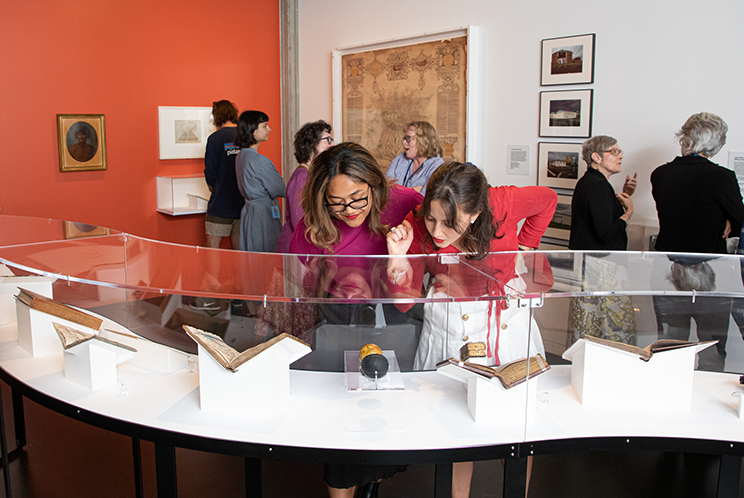
Visitors enjoying the Mīharo Wonder exhibition in the National Library Gallery, 26 February to 9 October 2021. Photo by Mark Beatty.
The Turnbull’s earliest exhibitions
The Turnbull first began holding regular exhibitions in the late 1930s, largely inspired by the overseas libraries that library assistant Clyde Taylor experienced during a 12-month Carnegie travel fellowship tour.
The spacious office of the retiring Chief Librarian Johannes Andersen was fitted with glass display cases — including special low cases for children — and transformed into an exhibition room.
Taylor's entry into the Chief Librarian role in 1937 brought about a slight shift in focus as he looked to broaden the Turnbull's audience beyond the researchers and scholars that made up most of its user base. Through exhibitions, Taylor aimed to draw in ‘the man in the street’; this was also done quite literally through displays in shop front windows for passers-by to view.
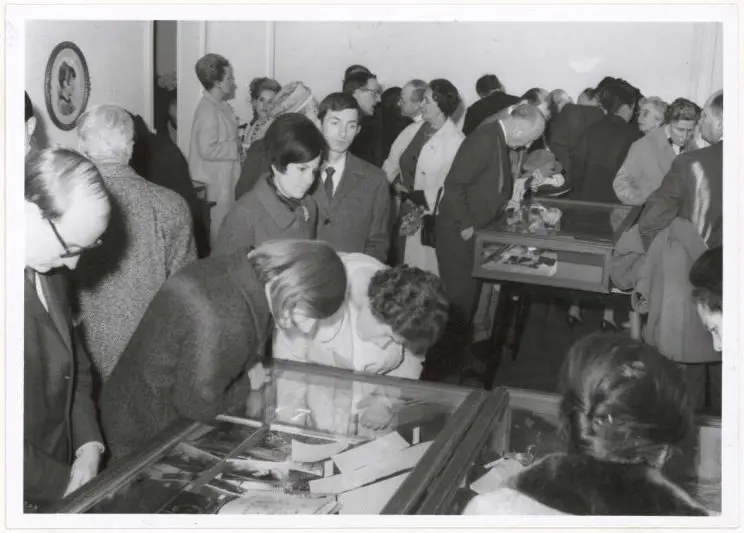
Visitors at the general opening of the 1966 Katherine Mansfield exhibition at the New Zealand Embassy in Paris. Ref: PAColl-8469. Alexander Turnbull Library.
Weekly window displays
In 1952, the Turnbull began using the windows of a building on the corner of Lambton and Bowen Street to put on smaller weekly exhibits from the collections. These displays tended to be topical, often marking commemorative days such as United Nations Day, or anniversaries related to events and significant figures. They proved popular — the marks left by “earnest foreheads and luxuriant locks” necessitated constant window cleaning. In 1954, when the Turnbull lost possession of the building space, Kirkcaldie & Stains offered up one of their department store windows so the displays could continue.
The Turnbull also began touring exhibitions relatively early on mostly within New Zealand, though one on Katherine Mansfield travelled internationally as early as 1966. Organised by the Library for the New Zealand Ambassador to France, and originally for display in Paris only, the exhibition proved very popular. Mansfield was “very much in vogue overseas” and the exhibition ended up travelling to London, New York, Ottawa, and several Australian cities.

Photography exhibition ‘Taking a wider view; photographic panoramas from the studio of R P Moore’, from the collections of the Photographic Archive, Alexander Turnbull Library. National Library Gallery, 17 November 1995 to 18 February 1996. Ref: Eph-E-TURNBULL-1995-01. Alexander Turnbull Library.
The Turnbull's first proper exhibition, opened in August 1936, explored The Story of Printing Traced in Ancient and Modern Books. Rare books, literature, fine printing, and early colonial art were all popular topics in this early period.
Centenary and other anniversary exhibitions were also common, often celebrating the birth or death of figures such as Shakespeare, Milton, and Captain Cook.
Exhibitions relating to New Zealand history largely focused on early Pakeha exploration and settlement, and how early New Zealand was depicted by artists like William Fox and Samuel Charles Brees.
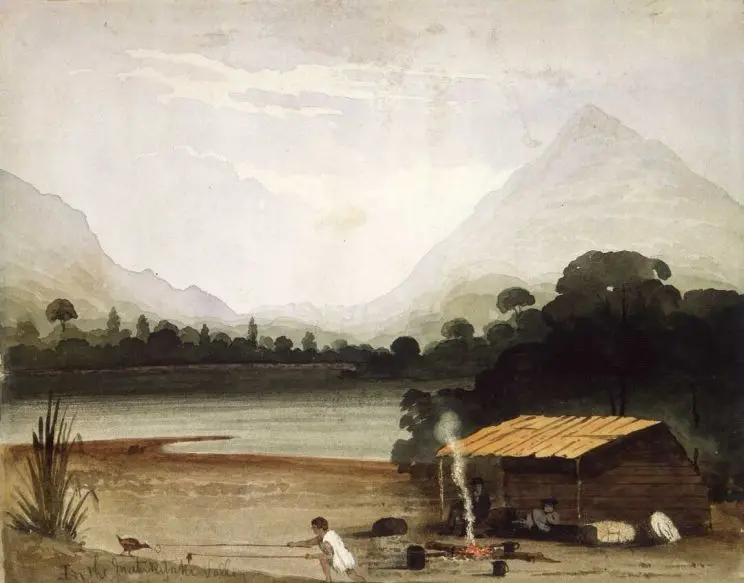
Exhibited in ‘Picturing Paradise; the colonial watercolours of William Fox’, at National Library Gallery, 25 February - 18 June 2000. Fox, William, 1812-1893. In the Aglionby or Matukituki Valley, looking into the Otapawa. 20th Feb. [1846]. Ref: B-113-008. Alexander Turnbull Library.
Exhibitions during WWII
The Turnbull kept up a relatively steady stream of exhibitions, even continuing throughout the World War 2 years. In late 1938 — at a time ”when the spirit of romance is threatened more, perhaps, than ever before, by the war clouds upon the European horizon” as one article about the exhibition said — the Turnbull debuted Fairies in Story, which looked at depictions of fairies in literature, fables, and folklore.
That is not to say that the war and its effects were invisible at the Turnbull. An exhibition of American rare books in 1942 was put on not long after U.S. troops landed in Wellington, and their signatures mark the visitor book.
A later exhibition in 1945, Europe as it was, featured famous architectural and historical sites damaged or destroyed in wars.
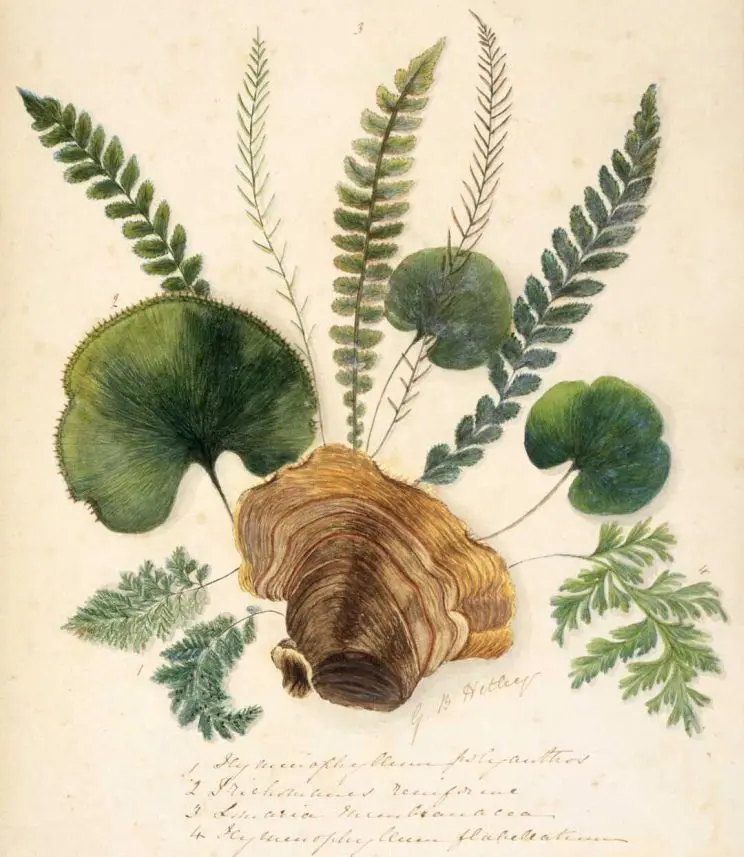
Exhibited in ‘Wild Things: Botanical and Zoological Art from the Alexander Turnbull Library’ exhibition, National Library Gallery, 22 November 1998 - 21 March 1999. Hetley, Georgina Burne, 1832?-1898. Ref: B-073-024. Alexander Turnbull Library.
Evolving exhibition design
The Turnbull's exhibitions have inevitably evolved over time, the result of changing social, financial and cultural contexts, new technology, and developments in exhibition design. From the 1970s and 1980s, changes have become more evident.
Electioneering New Zealand Style in 1975 was the first exhibition of the Turnbull to include audiovisual elements. Ephemera began to be utilised more, making up the majority of material on show in exhibitions such as Quenching a Thirst (on popular beverages) in 1982.
Exhibitions with a Māori focus began to emerge. Etahi Pukapuka Māori in 1981, for instance, was the Turnbull's first exhibition of material written entirely in te reo Māori. Even when the Turnbull was finally integrated into the National Library when the Molesworth Street building opened in mid-1987, Turnbull collections and curators still contributed to a majority of the exhibitions.
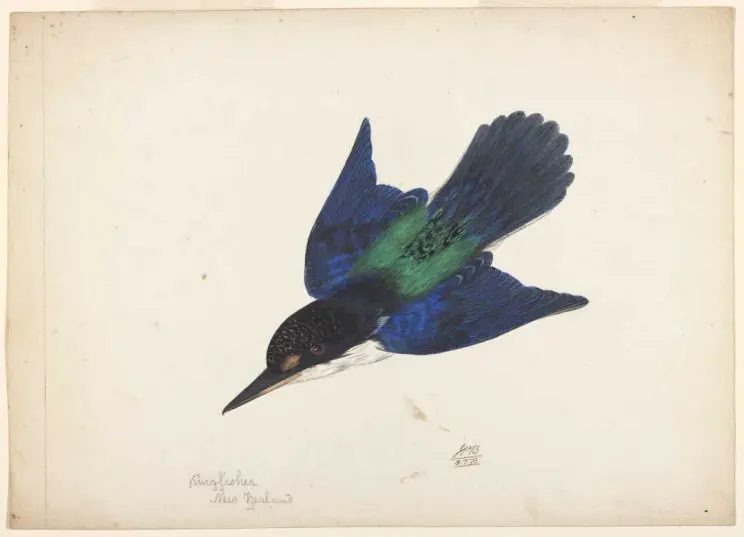
Exhibited in ‘Wide-Eyed: Early Images of New Zealand’ exhibition of works by settler artists, held at the National Library of New Zealand Gallery, 18 July - 9 November 1997. Backhouse, John Philemon 1845-1908 :[Birds, mostly Australian] 1873. Ref: B-107-030. Alexander Turnbull Library.
Golden age for exhibitions at the Turnbull
The period from 1987 to 2009 could be described as a golden age for exhibitions at the Library. The amount of space in the new building meant that multiple exhibitions could be put on at once.
However, while the exhibition tide has stemmed slightly since the refurbished National Library building reopened in 2012, there has still been a huge variety of exhibitions, covering everything from experimental music to hair in the collections.
We're currently at over 400 exhibitions and counting since 1936, and curators are continuing to think of creative new ways to display the national collections to the nation.
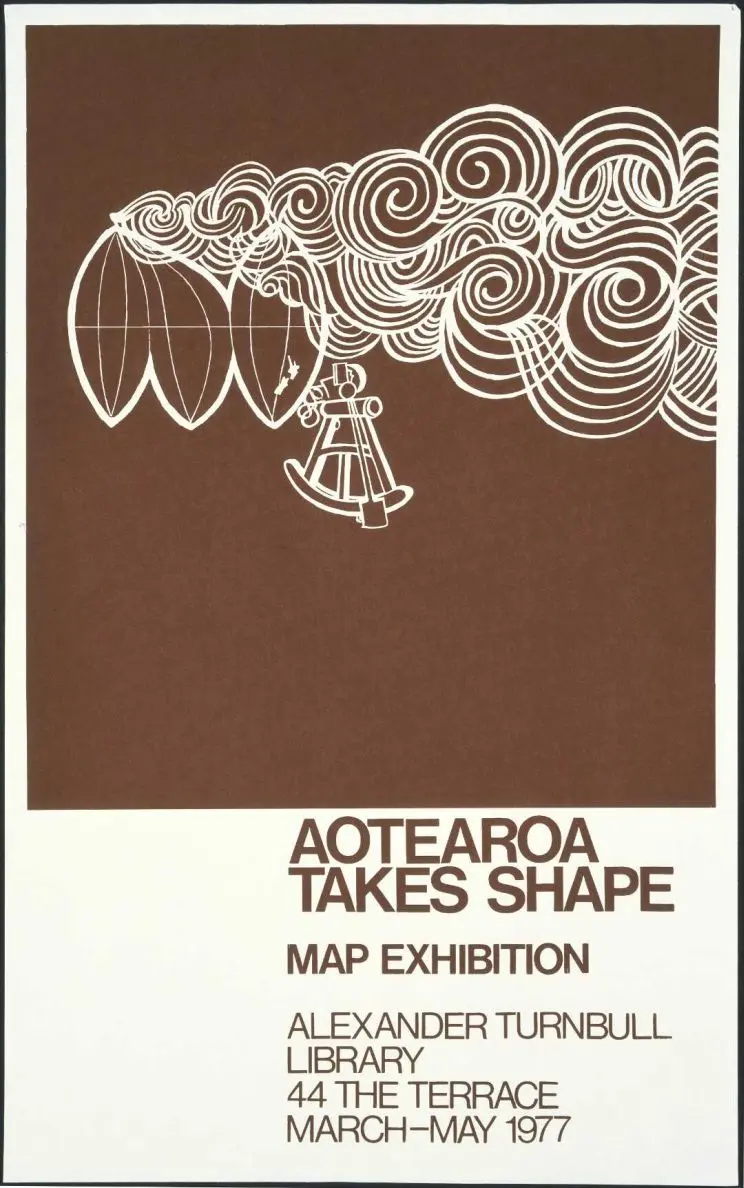
Turnbull Library map exhibition, ‘Aotearoa takes shape’, March - May 1977. Ref: Eph-C-TURNBULL-1977-01. Alexander Turnbull Library.
Exhibitions online
See past exhibitions held in the Turnbull Gallery, including Measured works: Surveyors’ views of early European settlement in Wellington and 'Not one more acre': The Māori Land March 40 years on
Thanks to Friends of the Turnbull Library
Thanks to the Friends of the Turnbull Library for permission to republish this article, which was originally published in their Off the Record print publication.
The Friends of the Turnbull Library is a national organisation that supports the work and activities of the Alexander Turnbull Library, they promote public interest in the Library’s collections and supports research and use of its collections.
More information about the Friends of the Turnbull
Our Off the record blog series will republish articles from the Off the Record magazine including stories about new acquisitions, research projects and other news about the Turnbull Library collections.